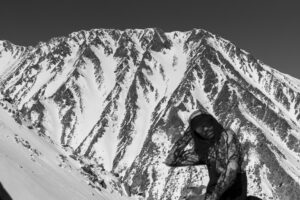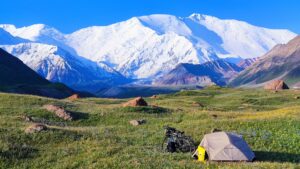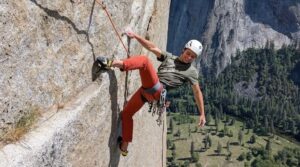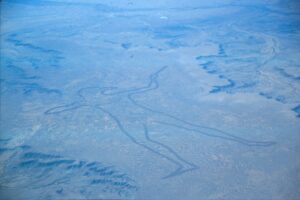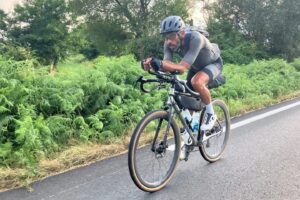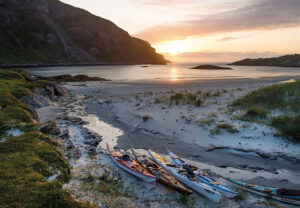It’s difficult not to be hooked on a compelling tale of misfortune. Not so gently, they remind us that nature is almost always going to win the fight against humans. “Almost” is the key word here. But even when people survive, by pluck or ingenuity or by chance, it’s fair to say that the odds were leaning toward nature.
Mauro Prosperi
Marathon Des Sables, a 233km ultra-marathon across the Sahara, is one of the toughest foot races on earth. Participants must carry their resources with them. It’s a test of determination, resilience and also a battle with extreme temperatures and exhaustion. In 1994, Mauro Prosperi lined up at the start, intending to compete good-naturedly with a friend. Prosperi’s race turned out to be anything but friendly.
He was in good spirits when a disorienting sandstorm caused him to run in the wrong direction. Blinded by the sand and unable to see an inch in front of him, he strayed into Algeria and was lost for nine days in the desert.
Unable to resupply at one of the race’s checkpoints, Prosperi ran out of food within 24 hours. Despairing and convinced that he would die of thirst, he tried to slit his wrists with a blunt object. Eventually, he managed to find a shred of drive to try to make it through the ordeal. Prosperi came across a derelict shrine which he used as shelter and feasted on bat guts and blood for nourishment.
Eventually, he was found by a young girl and taken to an Algerian military camp. He’d lost 18kg and had run almost 300km off-course.

Jose Salvador Alvarenga remains the only known human to survive longer than a year at sea.
Jose Salvador Alvarenga
Nowadays, Jose Salvador Alvarenga stays “as far from sea as I can get”. He is the first known person to have survived more than a year at sea. As such, his distaste for the ocean is understandable.
In 2012, Alvarenga set out for a 30-hour shift, fishing for shark and marlin off the Mexican coast. A colleague, Ezequiel Córdoba, joined him. This was their first time working together, and it would also be their last. Their problem began when a storm blew them off course, damaging their motor and onboard electronics. They had no oars or anchor. Nevertheless, they had managed to radio for help moments before their signal was lost. A search ran for just two days before it was abandoned because of poor visibility.
They drifted together for four months, surviving from raw fish and turtles. Córdoba then fell ill from something he ate. He first asked Alvarenga not to eat his body, then chose to refrain from food and die of starvation.
In the days following, Alvarenga also contemplated suicide but eventually decided to continue to survive off raw sea life. Vitamin C found in turtles and raw fish prevented scurvy.
After 438 days at sea, Alvarenga spotted the remote island of Ebon and jumped from his boat to swim to shore. Those who found him were at first sceptical that anyone could survive more than a year at sea. Alvarenga spent his first 11 days on land in hospital being treated for dehydration but he was otherwise in miraculously good health.

Aron Ralston cut off his own arm with a blunt pocketknife to survive.
Aron Ralson
Made famous by the book Between a Rock and a Hard Place and the film 127 Hours based on it, Ralston’s ordeal forces everyone to wonder if they could do the same as he.
Ralston was an experienced mountaineer when in 2003, at the age of 28, he went off on a solo canyoning trip in Utah. He didn’t take his phone with him or tell anyone where he was going, because he didn’t expect to be away for long. While descending a canyon, he dislodged a boulder, which crashed down onto his right hand, pinning it to the cliff face.
For the next three days, Ralston tried to extricate himself by lifting the boulder with his free hand. This didn’t work, nor could he break the rock. With only 350ml of water and two burritos to ration, he eventually decided that the only way to survive was by amputating his own arm. It had already begun to decompose anyway, a useless anchor trapping him.
On day four, he carved his name into the rock face with an estimated date of death, recorded his final thoughts on video and resolved to begin cutting off his arm if he survived the night. On the fifth morning, he began the amputation using the only object available: a blunt pocketknife, with his plastic drink hose as a tourniquet. He later described his knife as the cheapo kind “you might get for free with purchase”.
The amputation took an hour in all. First, he had to break the radius and ulna bones, then he severed the dead tissue with the pocketknife. When that was over, he still had to rappel down the canyon with one arm and hike 10km back toward his car, before he stumbled across a family, who called for help.

Yossi Ghinsberg spent three weeks lost in the Amazon rain forest. Two others in his party perished.
Yossi Ghinsberg
In 1981, 22-year-old Yossi Ghinsberg embarked on an odd expedition into the Amazon. Lost in the Jungle presents Ghinsberg’s tale as one overshadowed by a bizarre and sudden end to two other lives. Although Ghinsberg survived, his fate was no fairy tale, either.
Ghinsberg had long wanted to explore the Amazon, following in the footsteps of the romantic convict/escape artist Papillon and meeting uncivilized tribes. Instead, he met three new friends — Marcus Stamm, Karl Ruprechter and Kevin Gale — in South America. Together, the young men rashly decided to head into the jungle.
They weren’t long in the forest before they were lost. Meanwhile, questions came up about how trustworthy Ruprecheter was and around some of the claims he was making. A schism occurred within the group, and Ghinsberg and Gale built a raft to try to find their own way out. The raft capsized, and the pair were separated. Gale made it back to civilization in just a few days, but Ghinsberg did not.
He survived on a diet of berries and suffered many bites from red ants and other insects. He became increasingly weak, and his feet began to rot from the continuous dampness. Like Mauro Prosperi, he contemplated suicide as a way to shorten his suffering, but after three weeks alone, he was found.
Ruprechter and Stamm were never seen again. It transpired that Ruprecheter was a wanted convict who had lied to the group about his background. Their fate remains a mystery.

Bob Gauchie survived a plane crash and temperatures down to -60° for 58 days.
Bob Gauchie
Most of those who become stranded in subzero temperatures don’t make it through the first couple of nights, but Bob Gauchie is a living miracle.
In February 1967 — deep winter in the subarctic — Gauchie was flying solo in his de Havilland Beaver aeroplane. He noticed that the aircraft was low on fuel and made an immediate descent. He landed on a remote lake in Canada’s Northwest Territories.
For 58 days, Gauchie sheltered from the severe cold in the husk of the plane. Temperatures sometimes dipped below -60°C at night. Search planes circled above, but no one could see him because of the white landscape and white plane.
Although he was sure he was a goner, Gauchi told himself not to give up. Eventually, long after the official search had ended, another bush pilot spotted him. Although Gauchie survived, his frostbitten toes could not boast the same.

